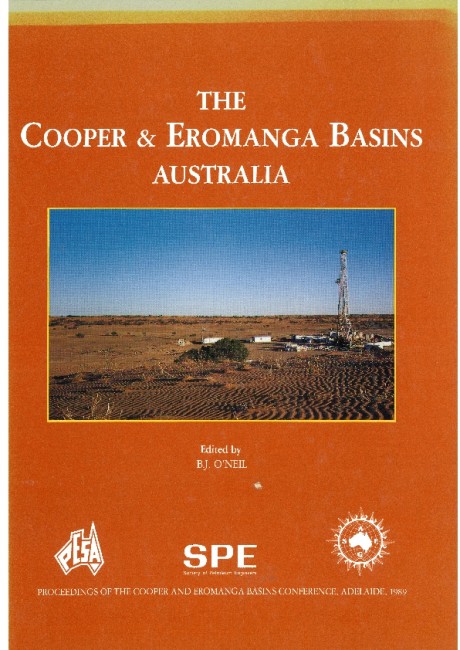Publication Name: The Cooper & Eromanga Basins Australia
Authors: V.L. Passmore
Date Published: June 1989
Number of Pages: 33
Reference Type: Book Section
Abstract:
The rapidly growing number of oil and gas discoveries in the Eromanga Basin demonstrates that the EromangaBasin is one of the most prolific and important of the Australian Jurassic and Cretaceous petroleum basins.
Although most of its accumulations are small, it has 12 hydrocarbon-bearing reservoir units. A comparison with
other major Jurassic and Cretaceous Australian petroleum basins shows that stacked multiple pools and dual sourcing of Jurassic oil accumulations make it unique.
Four basins (Surat, Bonaparte, Browse, and Carnarvon) are compared with the Eromanga Basin. The Surat Basin is most similar. Both are onshore intracratonic sag basins in which cyclic deposition of terrestrial clastics provided a series of vertically stacked potential reservoir and source rocks. Neither basin underwent major post-Triassic structuring, and hydrocarbon traps are mainly anticlines associated with structures in the underlying basins and their episodic reactivation. Surat accumulations are largely gasprone, sourced from the underlying Bowen Basin, and confined to the lower part of the Jurassic sequence, while Eromanga accumulations are mainly oil-prone, dually sourced (locally from the Jurassic and from the underlying basins), and present in both Jurassic and Cretaceous reservoirs.
In contrast, sediments in the Bonaparte, Browse and Carnarvon Basins were deposited in a rift-drift regime
associated with the fragmentation of the Gondwana Supercontinent. More diversity and variation of depositional environments provided a broader spectrum of plays than is available in the Eromanga Basin.
Hydrocarbon traps are mainly offshore, often dependent on Mesozoic and Tertiary structuring, and commnnly
dependent on faults for closure. Discoveries are fewer in number, but commonly larger in size, reflecting the
constraints and economics of offshore exploration.


